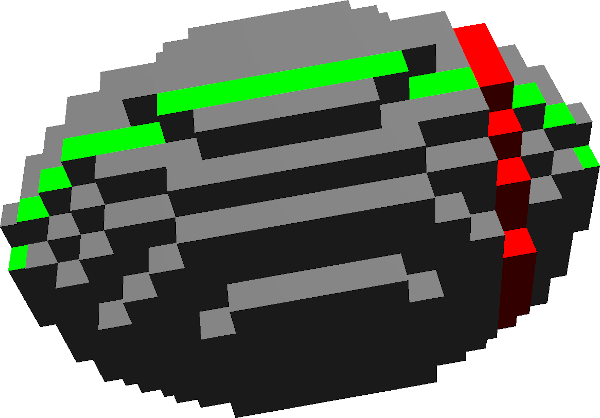Table of Contents
- Author(s) of this documentation:
- Jocelyn Meyron, Tristan Roussillon
- Since
- 1.2
Part of the Geometry package.
This part of the manual describes the normal estimation algorithm based on the computation of maximal segment on slices of a digital surface (see [73] and [86]).
The following programs are related to this documentation: geometry/surfaces/exampleMaximalSegmentSliceEstimation.cpp, testArithmeticalDSSComputerOnSurfels.cpp.
Introduction
Most of the estimators need some kind of parameters to control the neighborhood in which some averaging process is done. On the contrary, this estimator is interesting since it has no parameter. It is also fast and can be used as an input to other estimators (see PlaneProbingDigitalSurfaceLocalEstimator for instance). The idea is the following (for a surfel \( s \)):
- We compute the two 2-dimensional slices of the digital surface for the two directions of the surfel (using the DigitalSurface2DSlice class).
- For each slice, we project every surfel on a plane that is orthogonal to the initial surfel. This gives us two sets of 2D points.
- On each one of these sets, we use a recognition algorithm like the ones presented in Recognition of digital straight segments to compute the leftmost and rightmost maximal segments. This gives us two 2D normal vectors that we average.
- We finally take the cross product of the two 2D normal vectors.

Usage
The estimation is implemented in the class MaximalSegmentSliceEstimation. It is a model of concepts::CSurfelLocalEstimator and concepts::CDigitalSurfaceLocalEstimator, so it has the following methods:
- MaximalSegmentSliceEstimation::init() initializes the estimator.
- MaximalSegmentSliceEstimation::eval() runs the estimator either on a surfel or on a range of surfels.
- MaximalSegmentSliceEstimation::h() returns the gridstep.
- MaximalSegmentSliceEstimation::attach() attaches a digital surface to the estimator.
It can be instantiated and used as follows:
Implementation details
The class is essentially a wrapper of the class ArithmeticalDSSComputerOnSurfels which is an adaptation of ArithmeticalDSSComputer to recognize 2D digital segments on projections of 3D surfels. It can be instantiated as follows:
See the page Digital straight lines and segments
for more details on how to use it.